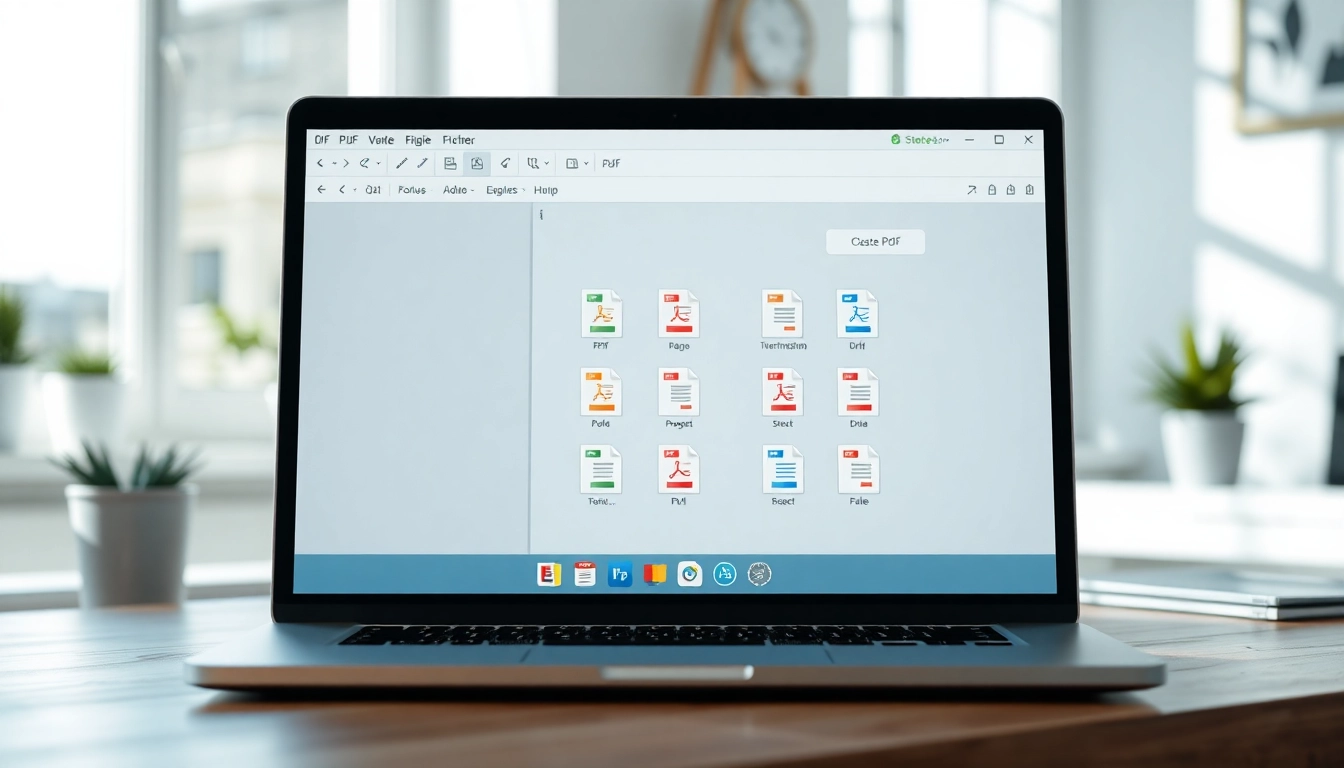Understanding the Basics of Website Design
Website design is a multifaceted discipline that involves the planning and creation of websites. From layout to graphics, and from content to overall aesthetics, many elements converge to form a cohesive online presence. The complexity of website design lies not only in the visual aspects but also in the underlying technology and user experience considerations. Through thorough research and understanding of effective methods, one can successfully navigate and implement website design strategies that enhance engagement and functionality.
What is Website Design?
At its core, website design encompasses everything from the layout and color scheme to the content and usability of a website. It involves a blend of creativity and technical skills to ensure that the final product meets user needs while effectively conveying the intended message or commercial offering. The process can range from creating visually stunning graphics to ensuring that the website is optimized for various devices and search engines.
Importance of User Experience in Website Design
User experience (UX) is paramount in website design as it directly impacts how visitors interact with a website. A well-designed user experience can mean the difference between a casual visitor and a loyal customer. Factors such as website loading speed, intuitive navigation, and mobile responsiveness play crucial roles in shaping the overall user experience. Prioritizing these elements ensures that users are able to find the information they need quickly and efficiently, enhancing their overall engagement with the site.
Key Elements of Website Design
Effective website design is constructed upon several fundamental elements. These include:
- Layout: The arrangement of visual elements on a page that dictates how content is presented and perceived.
- Color scheme: A composition of colors chosen to represent the brand while evoking desired emotional responses.
- Typography: The style and size of fonts, which significantly affects readability and user engagement.
- Images and Graphics: Visual content must align with and enhance textual information, improving comprehension and retention.
- Content: Written material providing information that is engaging, relevant, and intended for the target audience.
Building Blocks of Successful Website Design
Choosing the Right Layout and Structure
The layout of a website is akin to the foundation of a building. It helps to establish the structure upon which all other elements are built. There are multiple layout styles to consider, including:
- F-Layout: This layout mimics the natural reading pattern, aligning important elements along areas where users are more likely to focus.
- Grid Layout: A clean arrangement that facilitates the organization of content into blocks for easy navigation and readability.
- Single Column Layout: Ideal for mobile devices, guiding users through a linear path without distractions.
Determining the best layout will depend largely on the website’s purpose, content type, and target audience.
Selecting Color Schemes and Typography
Color schemes can evoke specific emotional responses and are crucial for brand identity. It’s essential to choose a palette that resonates with your audience while ensuring that there is sufficient contrast to foster readability. Coupled with this, typography plays a significant role in how content is perceived. It is recommended to stick to a limited number of typefaces, ensuring consistency and professionalism across the site.
The Role of Graphics and Images in Website Design
Visual elements are essential in website design. They not only break up text-heavy sections but also serve to convey messages more effectively than words alone. The choice of images should relate closely to the content being presented, support the brand image, and enhance overall aesthetics. Additionally, infographics and videos can be highly engaging and convey complex information in an easily digestible format.
Enhancing Functionality in Website Design
Integrating User-Friendly Navigation
User-friendly navigation is essential for guiding visitors through a website. Well-structured menus help users locate information quickly, leading to higher retention rates. A few effective strategies include:
- Dropdown Menus: Allowing for easy access to different sections without cluttering the interface.
- Breadcrumbs: Offering users clear paths back to previously visited pages.
- Search Functionality: Enabling users to find specific content quickly through a search bar.
Utilizing Responsive Design Techniques
With an increasing number of users accessing websites via mobile devices, responsive design has become a crucial aspect of website design. This approach ensures that a website’s layout adapts to the user’s screen size, providing an optimal viewing experience across all devices, from desktops to smartphones. Techniques such as flexible grid layouts, flexible images and CSS media queries are fundamental in achieving responsiveness.
Considering SEO in Website Design
Search engine optimization (SEO) is intrinsically linked to website design. A well-designed website can improve search engine rankings by ensuring that all technical aspects adhere to best practices. Important considerations include optimizing images for faster loading times, structuring content with header tags, using descriptive alt tags for images, and ensuring that the site is easily crawlable by search engines. Additionally, integrating keywords naturally into the content contributes significantly to enhancing visibility.
Trends in Website Design
Current Aesthetic Trends in Website Design
The field of website design is continuously evolving with new trends that guide how websites are built and experienced. Current trends include:
- Dark Mode: Offering a stylish alternative that improves usability in low-light environments.
- Neumorphism: A design trend that blends layers and dimensions for a more tactile experience.
- Dynamic Content: Using animations and interactive elements to engage users effectively.
The Influence of Minimalism and White Space
Minimalism continues to dominate web design, focusing on simplicity and functionality. The use of ample white space not only enhances aesthetics but also improves user comprehension by allowing elements to breathe and stand out on the page. This approach can lead to higher conversion rates as users are less likely to feel overwhelmed by cluttered designs.
Emerging Technologies Impacting Website Design
Technological advancements continually shape website design. The integration of artificial intelligence, for instance, is transforming the way websites interact with users, offering personalized experiences based on user behavior. Additionally, advancements in virtual and augmented reality provide exciting opportunities for immersive experiences on websites, offering brands new ways to engage their audiences.
Measuring the Success of Your Website Design
Tools for Analyzing User Engagement
To determine the effectiveness of a website design, utilizing analytical tools is essential. Services such as Google Analytics can provide valuable insights into user behavior, tracking metrics like page views, bounce rate, and user demographics. This data allows designers to make informed decisions on how to optimize and enhance site performance effectively.
Setting KPIs for Website Design Effectiveness
Establishing key performance indicators (KPIs) is crucial in measuring the success of a website design. Metrics such as conversion rates, time spent on pages, and user feedback can inform design adjustments and improvements. Setting precise KPIs allows for objective assessments and fosters continuous improvement.
Continuous Improvement through User Feedback
User feedback is an invaluable resource for refining and improving website design. Implementing surveys or feedback forms can help collect insights into user experiences and expectations. Analyzing this feedback enables web designers to address pain points and enhance overall usability, creating a more satisfying user experience.



